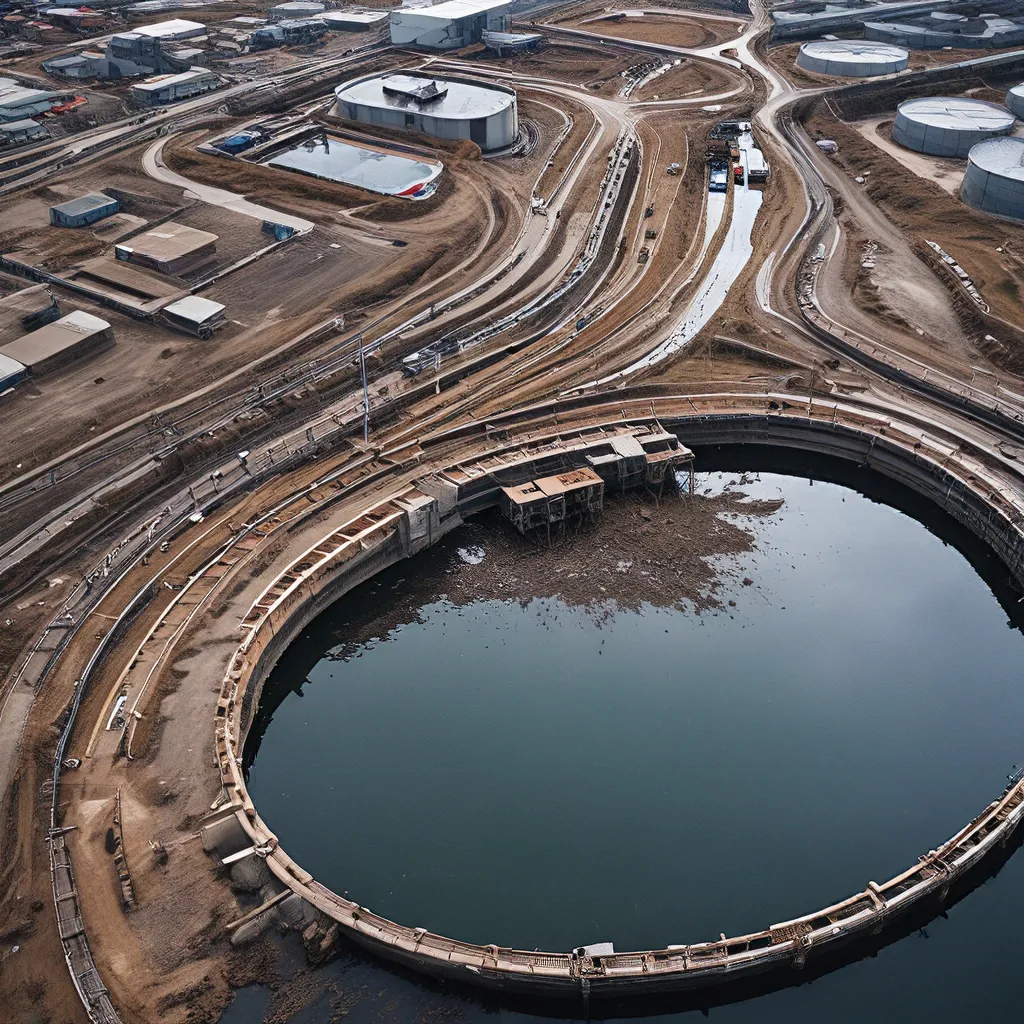
As an avid sustainability enthusiast, I’ve been captivated by the concept of the circular economy and its potential to revolutionize the way we manage our wastewater. The traditional linear “take-make-waste” model has long dominated our approach to resource management, but it’s become increasingly clear that this approach is simply unsustainable.
That’s why I’m excited to dive into the opportunities that lie in the intersection of wastewater treatment and the circular economy. It’s a fascinating intersection that holds the promise of transforming our relationship with this vital resource.
Rethinking Wastewater: From Waste to Treasure
For too long, we’ve viewed wastewater as nothing more than a problem to be dealt with – a nuisance that needs to be flushed away and forgotten. But what if we could reframe our perspective and see wastewater as a treasure trove of valuable resources waiting to be unlocked?
The circular economy offers us a new lens through which to view wastewater. Rather than treating it as waste, the circular approach encourages us to see it as a source of renewable energy, reusable materials, and nutrient-rich fertilizers. It’s a mindset shift that has the potential to unlock a wealth of economic and environmental benefits.
Harnessing the Power of Wastewater
One of the most exciting aspects of the circular economy in the context of wastewater is the opportunity to harness the energy and nutrients contained within it. Through technologies like anaerobic digestion, we can capture the methane produced during the wastewater treatment process and use it to generate renewable energy. This not only reduces our reliance on fossil fuels but also helps to offset the energy demands of the treatment plant itself.
But the potential of wastewater doesn’t stop there. Many of the solids and materials that are filtered out during the treatment process can be repurposed and recycled into valuable products. Things like biosolids, for example, can be transformed into nutrient-rich fertilizers that can be used to enrich agricultural soils and support sustainable food production.
Designing for the Circular Future
Of course, realizing the full potential of the circular economy in the wastewater sector requires a fundamental shift in the way we design and operate our treatment systems. It’s not enough to simply bolt on new technologies; we need to rethink the entire system from the ground up, with a focus on eliminating waste, circulating materials, and regenerating natural systems.
This is where the principles of the circular economy come into play. By designing for disassembly, using renewable and non-toxic materials, and implementing closed-loop processes, we can create wastewater treatment systems that are truly sustainable and regenerative.
One exciting example of this is the Nutrient Recovery Facility operated by the company website link. This facility uses innovative technologies to extract phosphorus and nitrogen from wastewater, transforming them into high-quality fertilizers that can be used to support sustainable agriculture. It’s a shining example of how the circular economy can be applied to the wastewater sector, unlocking new revenue streams while reducing the environmental impact of traditional treatment methods.
The Butterfly Effect: Connecting Wastewater and the Circular Economy
The beauty of the circular economy is that it’s not just about individual technologies or processes; it’s about systemic change. When we apply the principles of the circular economy to the wastewater sector, we’re not just addressing a single challenge – we’re tapping into a ripple effect that can have far-reaching implications for our entire society.
For example, by recovering and reusing valuable materials from wastewater, we can reduce the demand for virgin resources, which in turn lowers the environmental impact of resource extraction and processing. And when we use those recovered materials to create new products, we’re closing the loop and keeping resources in circulation, rather than sending them to landfill or incineration.
But the benefits of the circular economy in wastewater go even deeper. By generating renewable energy from wastewater, we can reduce our reliance on fossil fuels and contribute to the fight against climate change. And by producing nutrient-rich fertilizers, we can support sustainable food production, improve soil health, and enhance food security – all while reducing the need for synthetic fertilizers and their associated environmental impacts.
Embracing the Future: Challenges and Opportunities
Of course, transitioning to a circular economy in the wastewater sector is not without its challenges. There are technological hurdles to overcome, regulatory barriers to navigate, and infrastructure investments to be made. But I firmly believe that the benefits of this approach far outweigh the costs.
As we continue to grapple with the global water crisis, the climate emergency, and the need for more sustainable resource management, the circular economy offers a compelling solution that can help us address these complex challenges. It’s a future that I’m eager to be a part of, and I’m excited to see how the wastewater industry continues to innovate, collaborate, and transform in the years to come.
So, what can you do to contribute to this circular revolution? Educate yourself, support innovative companies like company website link, and advocate for policy changes that encourage the adoption of circular practices. Together, we can rethink the way we manage our wastewater and unlock a more sustainable, resilient, and prosperous future for all.